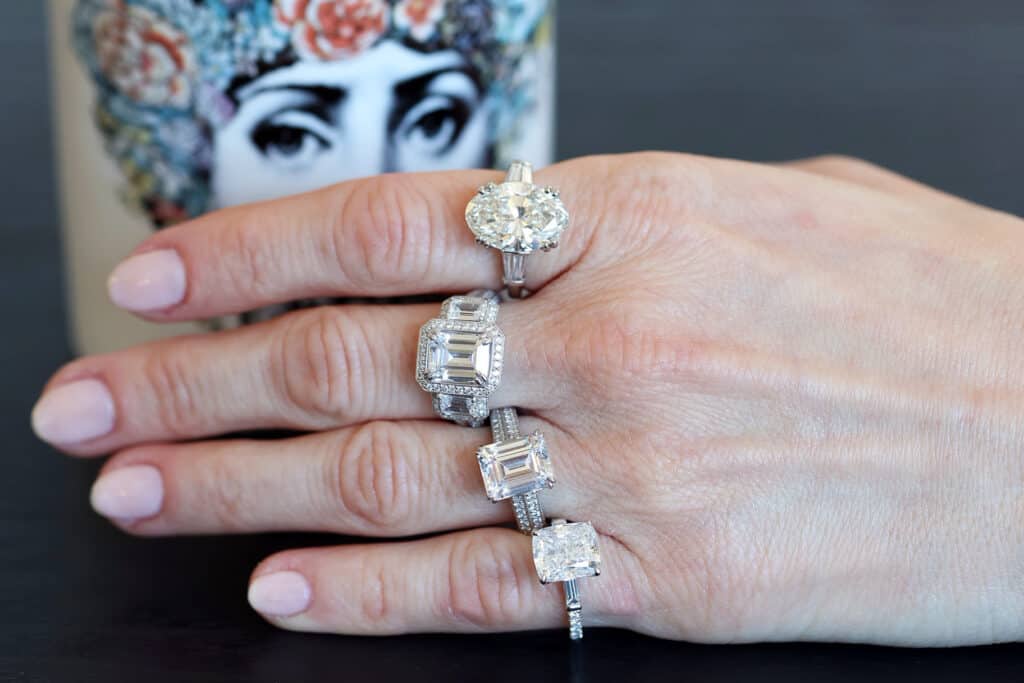Understanding Lab-Made Diamonds in Jewelry
In recent years, the jewelry industry has witnessed a significant shift with the rise of lab-made diamonds. These diamonds, created in controlled laboratory environments, offer the same visual and chemical properties as natural diamonds. As consumers become more conscious of sustainability, ethical sourcing, and cost, lab-made diamonds have emerged as a popular alternative. In this article, we explore the allure of joyería con diamantes de laboratorio (jewelry with lab-made diamonds) and why it is becoming a leading choice for modern jewelry lovers.
What Are Lab-Made Diamonds?
Lab-made diamonds, also known as synthetic or cultured diamonds, are real diamonds created through technological processes that replicate the natural conditions under which diamonds form deep within the Earth. There are two primary methods of creating lab-grown diamonds: High Pressure High Temperature (HPHT) and Chemical Vapor Deposition (CVD). These methods involve using carbon sources and advanced technology to grow diamonds layer by layer. The result is a gem with the same chemical structure, hardness, and brilliance as its natural counterpart. The key difference is that lab-made diamonds are created in a matter of weeks, rather than over millions of years.
The Benefits of Lab-Made Diamonds in Jewelry
One of the main reasons why joyería con diamantes de laboratorio has gained so much popularity is the combination of affordability, ethics, and quality. Lab-made diamonds are generally 20-40% less expensive than natural diamonds of similar size and quality. This price difference makes them an attractive option for those seeking to own high-quality diamond jewelry without the hefty price tag associated with mined diamonds.
In addition to being more affordable, lab-grown diamonds are an eco-friendly and ethical alternative. Traditional diamond mining can have significant environmental impacts, including deforestation, soil erosion, and the depletion of natural resources. Furthermore, some diamond mining operations have been associated with human rights violations. Lab-made diamonds, on the other hand, do not involve mining and can be traced back to their creation, ensuring ethical sourcing practices.
Lab-Made Diamonds in Modern Jewelry Trends
The rise of joyería con diamantes de laboratorio reflects broader trends in the jewelry industry. Consumers are increasingly prioritizing sustainability, transparency, and ethical consumption when purchasing luxury goods. Lab-grown diamonds cater to these values, allowing buyers to enjoy beautiful, high-quality diamonds while minimizing their environmental footprint.
Lab-made diamonds are versatile and are used in various types of jewelry, including engagement rings, necklaces, earrings, bracelets, and more. Designers and jewelers are embracing the innovation of lab-grown diamonds, incorporating them into unique, modern designs that appeal to a wide range of tastes. Whether set in minimalist, classic styles or bold, contemporary settings, lab-made diamonds offer endless possibilities for creating personalized and timeless jewelry pieces.
The Science Behind Lab-Made Diamonds
Lab made diamonds possess the same physical properties as natural diamonds. They are made from carbon atoms arranged in a crystal lattice structure, which gives diamonds their characteristic brilliance and durability. Because lab-grown diamonds undergo the same crystallization process as natural diamonds, they are virtually indistinguishable from their mined counterparts.
Advanced technology allows these diamonds to be created with exceptional precision, ensuring high-quality stones that are virtually flawless. Gemologists can confirm the authenticity of lab-made diamonds through specialized tests, but for the average observer, the differences between lab-made and natural diamonds are practically imperceptible.
The Future of Lab-Made Diamond Jewelry
As the demand for more sustainable and ethical products grows, joyería con diamantes de laboratorio is poised to play a significant role in shaping the future of the jewelry industry. With continuous advancements in technology, the production of lab-grown diamonds is becoming more efficient, allowing for even greater accessibility and variety.
The jewelry market is expected to see a continued shift toward lab-grown diamonds as more consumers recognize the benefits of these diamonds. Lab-made diamonds are no longer seen as a compromise; rather, they are celebrated for their ethical qualities, affordability, and exceptional beauty.
Conclusion
In conclusion, lab-made diamonds have revolutionized the world of fine jewelry. Whether it’s for engagement rings or other luxury pieces, joyería con diamantes de laboratorio offers a stunning alternative to mined diamonds. With their ethical sourcing, affordability, and brilliance, lab-grown diamonds have earned their place in the hearts of consumers who value both beauty and sustainability. As technology continues to evolve, the future of lab-made diamonds in the jewelry industry looks promising, providing consumers with more choices, more transparency, and a lasting impact on the way we think about luxury.










